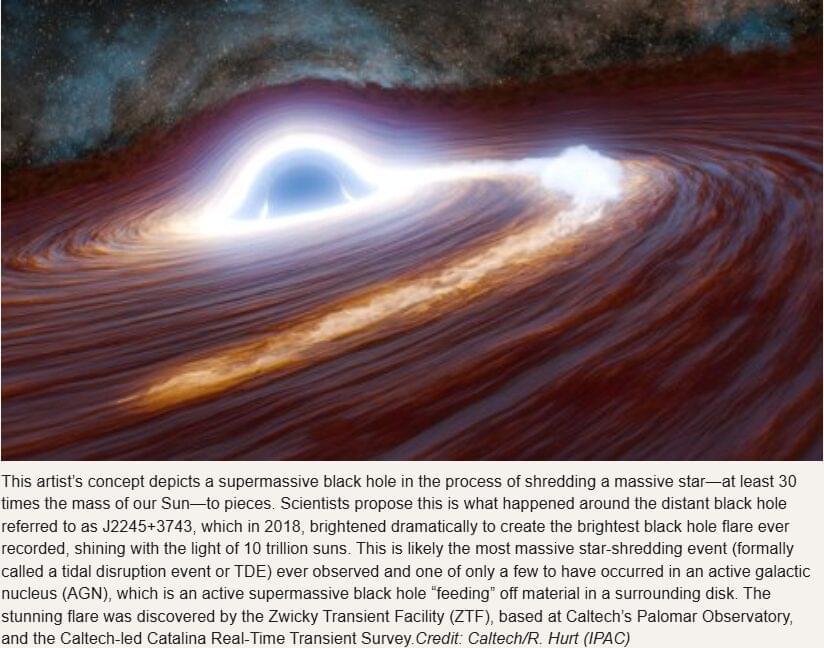A distant supermassive black hole has set a new cosmic record, unleashing the brightest flare ever seen as it devoured a gigantic star that wandered too close. A colossal black hole 10 billion light-years away has been caught devouring one of the universe’s biggest stars, unleashing a flare 30 times brighter than any seen before. The flare, detected by Caltech’s ZTF, likely marks a tidal disruption event — when a star is shredded by a black hole’s gravity.
The Universe’s most massive stars typically end their lives in spectacular explosions known as supernovae before collapsing into black holes. But one enormous star seems to have met a very different fate. Instead of exploding, it strayed too close to an immense black hole, which tore it apart and consumed it piece by piece.
That scenario best explains the findings of a new Nature Astronomy study describing the most powerful and most distant flare of energy ever seen from a supermassive black hole. The object was first detected in 2018 by the Zwicky Transient Facility (ZTF), a sky survey funded by the US National Science Foundation (NSF) and operated at Caltech’s Palomar Observatory. It was also tracked by the Catalina Real-Time Transient Survey, another NSF-funded Caltech project. The flare brightened dramatically — by a factor of 40 within months — and at its peak was 30 times more luminous than any black hole flare observed before. At maximum intensity, it shone with the light of 10 trillion suns.

This new cosmic record sets the stage for future studies into black hole dynamics. It’s also a reminder of how much we still don’t know about the universe!